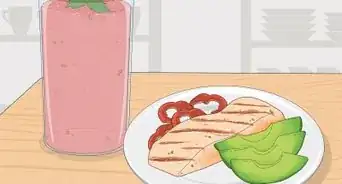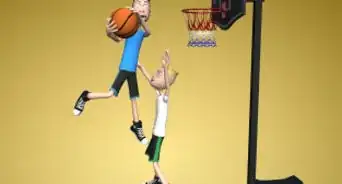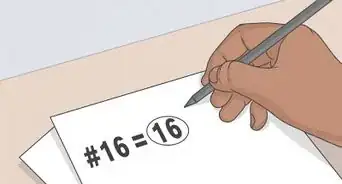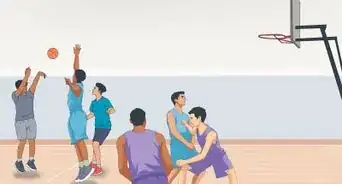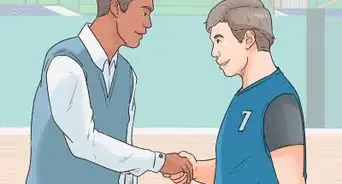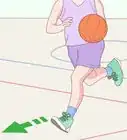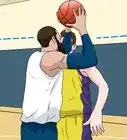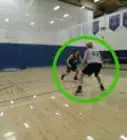This article was co-authored by Ryan Tremblay. Ryan Tremblay is a Basketball Coach and the Owner of National Sports ID and STACK Basketball. With over 30 years of experience, Ryan specializes in basketball coaching, social media marketing, and website design. Ryan created the National Sports ID as a platform to verify the age/grade of youth athletes and STACK Basketball to inspire young athletes to grow into mature individuals and basketball players. Ryan was a First Team All-Decade basketball player in Bergen County and finished in the top 20 all-time leading scorers in the county’s history with 1,730 points. He went on to Caldwell University on a basketball scholarship where he was part of three championship teams. Ryan was a two-time All-Metropolitan, All-State, and All-Conference point guard and the all-time three-point leader in the school’s history, landing him in the Caldwell University Athletic Hall of Fame.
There are 7 references cited in this article, which can be found at the bottom of the page.
wikiHow marks an article as reader-approved once it receives enough positive feedback. In this case, 97% of readers who voted found the article helpful, earning it our reader-approved status.
This article has been viewed 381,318 times.
As legendary college basketball coach Bob Knight once said, “Good basketball always starts with good defense.” A team’s defense really can make or break a game, and being a good individual defender can make you a huge contributor on your team. By dedicating yourself to improving your defense, you can help your team come out ahead in even the toughest of tight games.
Steps
Practicing a Good Defensive Stance
-
1Set your feet slightly wider than shoulder-width apart. Point your feet forwards and place them just wider than your knees, which should be comfortably shoulder-width apart. This stance will already start to lower your center of gravity and give you a strong base.[1]
-
2Put your weight in the balls of your feet and bend your knees. Shift your weight into the balls of your feet and lift your heels just slightly off the ground. Bend your knees and lower your body into a strong squat position. A good rule of thumb is that if you think you’re low enough, try to get lower.[2]
- Focus on keeping your weight in the balls of your feet, but not in your toes, which will throw you off balance.
- To test how low your stance is, reach down with one hand. You should be able to touch the ground with your fingers. You should still be able to move easily; if you can’t, ease up on your squat just a bit.
- Keeping your weight low and centered on the balls of your feet will help you stop quickly, accelerate faster, and react better to the ball.
Advertisement -
3Keep your back flat, but not totally straight. Your back should be level from your shoulders to your hips and slightly arched, but not totally straight. To help you get a feel for the posture, reach your hands down to the ground while sticking your chest up. Your upper body will lean forward a bit, but keep your weight balanced.[3]
- This stance might seem uncomfortable at first, but it will feel more natural with practice.
- Making sure your back is flat will protect it from injury while keeping you balanced.
-
4Raise your hands and keep them loose and active. Experiment with placing your hands out to the sides, or placing one hand wide while keeping the other at the offensive player’s hip or using it to dig for the ball. Whatever you do, don’t let your hands fall to your sides.[4]
- Your coach might have a specific hand placement they want you to use depending on how aggressive your defense is. If not, just focus on keeping your hands up and active. Try different positions and see what feels natural and effective.
Defending the Ball
-
1Sprint back on defense as soon as your team shoots. Your team might have a specific transition defense, but in general, the first player back should run to the rim to prevent an easy lay-up. The second player back should pressure the player with the ball, and the remaining 3 players should cover the offensive players.
- Communication is key during a transition! Tell your teammates if you’re covering the basket, the ball, or an open player.
- Your role on offense might be to sprint towards the net to get the rebound after a shot. In this case, you would only sprint back on defense if you don’t get the rebound and the other team has secured the ball.
-
2Pressure the player with the ball immediately. If you see that the player with the ball has no one on them, run up to them right away to pressure the ball. The biggest threat to a defense is an offensive player with an open passing or dribbling lane, and the best way to stop this is to pressure as soon as possible.[5]
- Work within your team’s gameplan. If your coach assigns you to a player, try to stick with them as much as possible. If a player has the ball without any pressure, though, attack them as soon as possible.
-
3Angle your body to force them towards the sideline. Slide the foot nearest to the sideline a few inches behind the other. The toe of your back foot should be in line with the heel of the other. Angle your chest just slightly in that direction.
- This angled stance, called a “heel/toe/pushpoint” alignment, prevents the ball handler from dribbling up the middle of the court. Instead, you’ll push them towards a sideline, baseline, or your teammates on defense.
-
4Stay lower than the other player at all times. It’s important to stay in your low defensive stance even as you move with the ball handler. Keep your body lower than theirs at all times, lowering your head and torso so that your eyes are shoulder-level with them.[6]
- Instead of standing up when you have to move, stay low and shuffle from side to side.
- To help you stay low, get into your stance and imagine that you’re playing in a gym with a ceiling just above your head. If you straighten up or bob up and down when you move, you’ll hit your head on the ceiling.[7]
- Staying in a low defensive stance gives you great balance and lets you react quickly to the ball.
-
5Keep your eyes on the ball handler’s chest or waist. It feels natural to look at the basketball or at the other player’s face when you’re playing on-ball defense, but this makes it easy for them to fake you out by looking another way or using a pump fake. Instead, look at their mid-section—anywhere from their chest to their waist.[8]
- It’s extremely hard for an offensive player to fake with their mid-section, which makes it a great way to track their movements.
-
6Use one hand to track the ball and the other to block a passing lane. Stay an arm’s distance away from the ball handler and reach one arm out a few inches away from the ball, using it to follow the ball’s movements. Keep your other hand lower and slightly to the side to distract the ball handler and cut off a passing lane.
- Don’t reach for the ball. This will put you off-balance and give the ball handler a chance to dart past you, and you could also be called for a foul if your hit their arm.[9]
-
7Communicate with your teammates all the time. Talk to your teammates through the whole defensive possession to let them know where you are and what’s happening on the floor that they can’t see. Some phrases you can use to communicate on defense include:[10]
- “Ball, ball, ball!”—use this when you’re running forward to pressure the ball.
- “Deny, deny, deny”—use this if you’re defending a player who’s one pass away from the ball.
- “Screen right” or “Screen left”—use these to tell a teammate that a screen is coming on one side. In a screen, an offensive player runs in to try to block the defense guarding another offensive player.
Defending the Dribble and Shot
-
1Drop back if the ball handler tries to dribble towards the net. When the ball handler tries to drive, or dribble hard towards the net, quickly shuffle backwards in your drop-step defensive stance. Stay low and move with them, trying to maintain your arms-length cushion to stay in the play.
- Be patient. Don’t try to reach or go for the steal unless the ball handler loses control or makes a big error.
-
2Force the ball handler to the nearest sideline. Start to angle your body more to the sideline as the ball handler dribbles. You want to use your body to block off their path to score, which means putting your back to the hoop and forcing them away from it.
- This will help you contain the ball handler until they make a mistake, or your teammates can come help.
-
3Try to flick the ball away during a dribble. Use the hand closest to the ball to flick the it away with a short, fast movement, called a dig. Don’t reach in with the hand blocking the pass to bat at the ball—you may hit the ball handler’s arm and be charged for a foul.
- Only try a dig if the player is trying to drive past you and you have no way of containing them, or if they’re handling the ball loosely and you see an opportunity.
-
4Draw a charge foul if you can. A charge occurs when a defender is hit in the torso by the ball handler while standing still, or moving backwards or sideways, with both feet on the ground. To draw a charge, stay in your low defensive stance and let the offensive player dribble at you, instead of charging the ball.
- Be careful when drawing a charge! You could be called for blocking if you’re moving towards the ball, don’t have both feet on the ground, or were hit on somewhere other than your torso.
- Move with the dribbler and stay in their dribbling lane to try to draw the foul.
- Stay very low and bend your forearm in front of your chest, keeping it strong and close to you to absorb some of the blow. Your upper body will naturally sway backwards, helping you to sell the call.[11]
-
5Defend a shot by blocking the shooter’s vision. If you see the ball handler go up for a shot, put a hand up to their face to distract them and disrupt their view of the rim. This allows you to force a missed shot without fouling or getting fooled if the ball handler is actually faking.[12]
- This is considered a better tactic than jumping and swatting at the basketball during a shot, which could result in a foul if you hit the shooter’s arm or, if they’re faking, gives them an open dribbling or passing lane.
Playing Off-Ball Defense
-
1Deny the pass when you’re one pass away from the ball. When you’re defending an offensive player who doesn’t have the ball but is close enough for a pass, stay in your defensive stance with one arm and foot in the passing lane. Keep your chest facing your opponent and look over your ball-side shoulder to see the basketball.[13]
- In some situations or defensive strategies, your coach might want you to help the on-ball defender instead of cutting off the pass. In this case, you’ll hover behind the on-ball defender to block off the dribbling lane.
-
2Stay on your player if they’re on the ball-side corner. The corner three-point shot is extremely dangerous for a defense. If you’re defending the player on this corner shot, you can dart out quickly to plug a passing lane, but you should always return to your player right away.[14]
- Stay on the corner even if the ball handler is driving to the rim. If you try to help in this play, the ball handler can dump off a simple pass to the corner player, who can take an easy jump shot.
-
3Create a “defensive triangle” to watch the ball and your player. If you’re guarding a player who’s farther from the ball and can’t be reached by a single pass, position yourself so that you can see both your player and the basketball out of the corners of your eyes. Keep your hands out and active, with one pointing towards the ball and one towards your player.[15]
- Try to be as close to the basketball as you can, while staying close enough to your player that you can defend them if they get a quick skip pass.
-
4Adjust your position at all times. Make sure you’re never standing still when you’re on defense. When the basketball or your player moves, adjust your position so you can react quickly to any play. Stay in your defensive stance and make sure you can always see both the ball and the player you’re covering.[16]
- Don’t get caught up in watching the ball and forget that you have a job to do, too! A good offense will always be able to take advantage of a lazy or distracted defender.
Building Strength and Practicing Defensive Skills
-
1Strengthen your stance with squats and wall sits. If you’re having a hard time holding a low defensive stance for your whole defensive possession, work on your leg strength with wall sits and low squats. Commit to working your legs at least 4-5 times a week to make your stance lower and stronger.[17]
- To do a wall sit, rest your back against a wall and slide down until your knees are at a 90 degree angle. Stay in position for as long as you can and work to last longer every time.
- To do a squat, stand up straight with your feet slightly wider than shoulder-width apart. Lower your body until your knees are bent at a 90 degree angle. Stand up straight and repeat for at least 10 reps.
-
2Work on your footwork with jump ropes and agility ladders. Quick footwork is an essential tool of every good defender. To improve your quickness, start by jumping rope for 10 minutes a day. Then, move on to doing drills with an agility ladder to work on your balance and speed.[18]
- With a jump rope, first try the basic single jump, focusing on getting your feet off the ground as quickly as possible. Then try moving side to side on each jump, or moving your feet back and forth.[19]
- With an agility ladder, run through and tap both feet in each square with your chest facing forwards, then turn to the side and do the same thing. Look up other agility ladder drills online for an extra challenge.
- If you don’t have an agility ladder, make your own with chalk on the sidewalk, or by laying down long sticks as “rungs.”
-
3Do planks to build up your core strength. A strong core will help you maintain your balance, which is important for a good defender. Practice a regular prone plank every day until you can hold it for 60 seconds, then try a side plank to work your oblique muscles.[20]
-
4Set up a footwork drill to work on quick movement and pressure. Sprint from the baseline to a cone level with the free throw line. Slow down and get into a defensive stance, then backpedal to a cone a few feet off the baseline and slide to the other side of the court. Sprint out to another cone, then slide across the top of the key to finish.
- You can work through this drill with your teammates or by yourself. Try to get through the course 3-5 times, going as hard as you can every time.
-
5Try a one-on-one defense drill to put your skills to the test. As the defensive player, hold the ball and stand at the free throw line with the offensive player. Hand them the ball to start the drill. The offensive player has to attack the rim and take a shot within 2-3 dribbles while you try to stop them.[21]
- Handing the ball to the offensive player means you have to start the drill right next to them, forcing you to react quickly to their moves.
- In this drill, focus on keeping the offensive player in front of you, staying in your defensive stance, and challenging every shot they take.
-
6Do a mirroring drill to work on positioning. Set up across from another player on parallel lines of the key. As the offensive player, they’ll move up and down the key and try to separate themselves from you, the defensive player. You’ll try to stay directly in line with them, no matter what they do.[22]
- Ask the offensive player to use fakes or quickly change pace to disrupt your mirroring.
- Stay low with active hands for the whole drill.
-
7Practice your defense in every drill and game. Volunteer to be defense in drills, defend the other team’s best player, and constantly push yourself to get into a better stance or position, on or off the ball. By dedicating yourself to your defense, you can make a huge difference in every game.
Community Q&A
-
QuestionIf the attacker has the ball, how far away should the defender be?
 Community AnswerIf the attacker is very good at shooting, then do not give them much space. If the attacker cannot shoot well, then they only have two options: to pass or go straight at you with a drive.
Community AnswerIf the attacker is very good at shooting, then do not give them much space. If the attacker cannot shoot well, then they only have two options: to pass or go straight at you with a drive. -
QuestionWhat if the opponent is fast and difficult to guard?
 Community AnswerGreat offensive players will be fast and difficult to guard, but you've got to train to be faster. If there is no other choice, a little dirty hit here and there can go a long way. That was the main tenet of the "Bad Boy Pistons" (one of the biggest contenders Jordan and Pippen ever had to face). A little shove or tap is a good way to slow a man down, but if you aren't down to play a little dirty, then I suggest you just work harder.
Community AnswerGreat offensive players will be fast and difficult to guard, but you've got to train to be faster. If there is no other choice, a little dirty hit here and there can go a long way. That was the main tenet of the "Bad Boy Pistons" (one of the biggest contenders Jordan and Pippen ever had to face). A little shove or tap is a good way to slow a man down, but if you aren't down to play a little dirty, then I suggest you just work harder. -
QuestionMy dad is equally good with either hands when dribbling. How do I guard him?
 Community AnswerGet low and keep your hands out. Do not fully commit reach, as he will go past you. Try to poke the ball out, and apply pressure.
Community AnswerGet low and keep your hands out. Do not fully commit reach, as he will go past you. Try to poke the ball out, and apply pressure.
References
- ↑ http://www.stack.com/a/basketball-defensive-stance
- ↑ http://www.stack.com/a/basketball-defensive-stance
- ↑ http://www.stack.com/a/basketball-defensive-stance
- ↑ http://www.stack.com/a/basketball-defensive-stance
- ↑ http://www.basketballforcoaches.com/basketball-defense-tips/
- ↑ http://www.basketballforcoaches.com/basketball-defense-tips/
- ↑ https://www.usab.com/youth/news/2012/08/3ways-to-dominate-on-defense.aspx
- ↑ http://www.basketballforcoaches.com/basketball-defense-tips/
- ↑ Ryan Tremblay. Basketball Coach. Expert Interview. 13 November 2020.
- ↑ http://www.basketballforcoaches.com/basketball-defense-tips/
- ↑ https://www.youtube.com/watch?v=pEykZ_chw4Y&feature=youtu.be&t=1m10s
- ↑ http://www.basketballforcoaches.com/basketball-defense-tips/
- ↑ http://www.basketballforcoaches.com/basketball-defense-tips/
- ↑ http://www.basketballforcoaches.com/basketball-defense-tips/
- ↑ http://www.basketballforcoaches.com/basketball-defense-tips/
- ↑ http://www.basketballforcoaches.com/basketball-defense-tips/
- ↑ http://www.basketballforcoaches.com/basketball-defense-tips/
- ↑ https://www.usab.com/youth/news/2012/08/3ways-to-dominate-on-defense.aspx
- ↑ https://www.youtube.com/watch?v=jSG0ThLbZLo&feature=youtu.be&t=11s
- ↑ https://www.usab.com/youth/news/2012/08/3ways-to-dominate-on-defense.aspx
- ↑ http://www.basketballforcoaches.com/basketball-drills-and-games-for-kids/#DefensiveDrills
- ↑ http://www.basketballforcoaches.com/basketball-drills-and-games-for-kids/#DefensiveDrills
About This Article
To be a great basketball defender, work on having a strong defensive stance with your weight in the balls of your feet and your hands active. When you’re defending the ball, keep one hand out to the side to block the passing lane and the other a few inches from the ball, always keeping your body lower than the offensive player’s. Force them to a sideline if they try to dribble and block a shot by disrupting their view of the hoop. Read on for tips on off-the-ball defense and fast-paced defensive drills to build your skills!
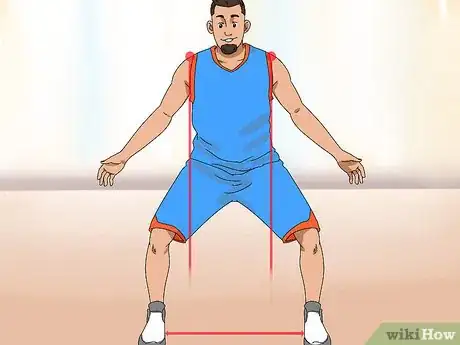
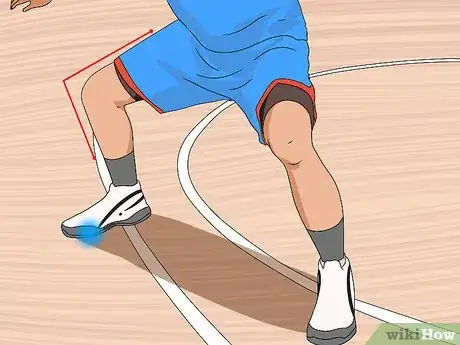
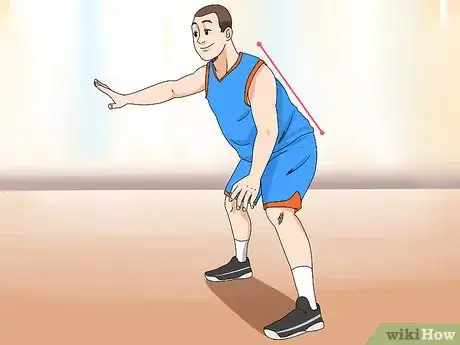
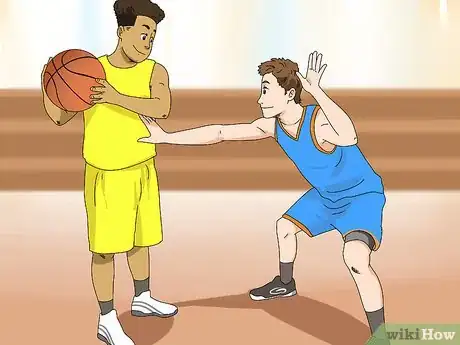
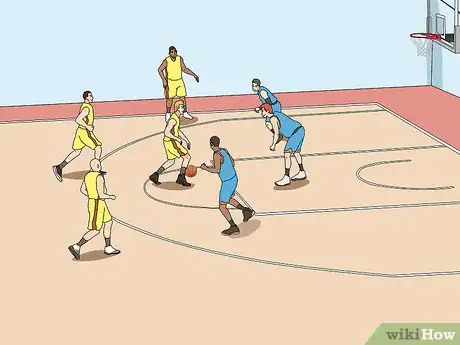
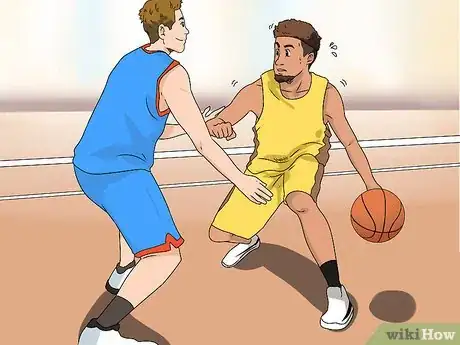
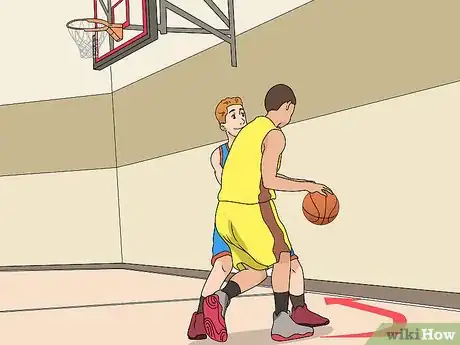
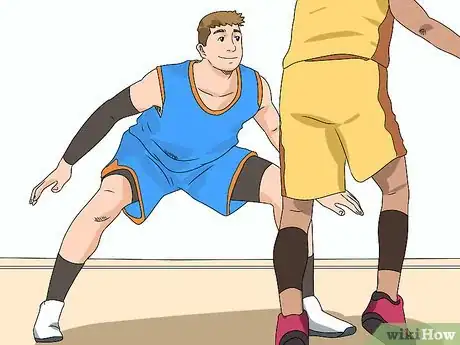
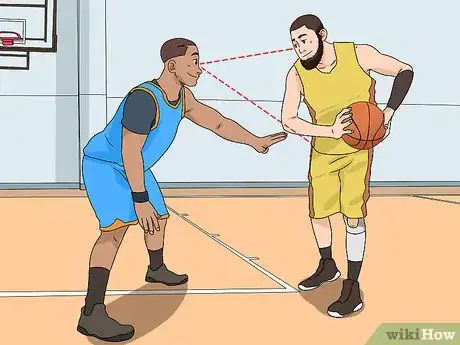
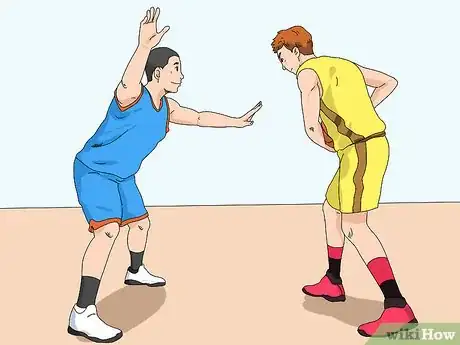


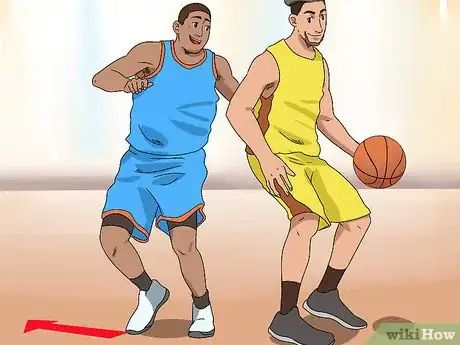
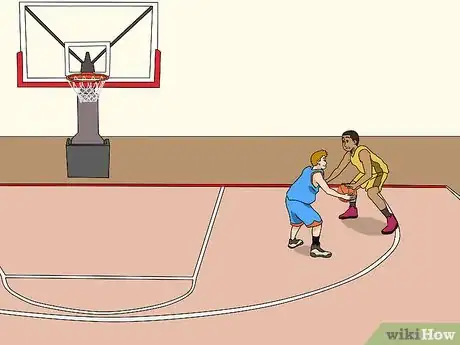
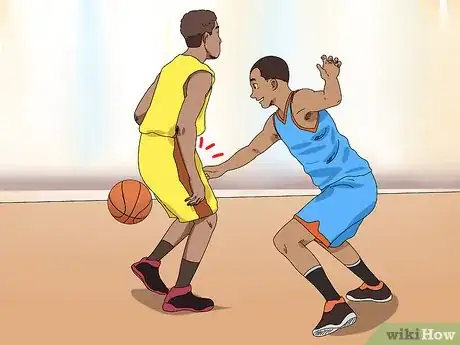
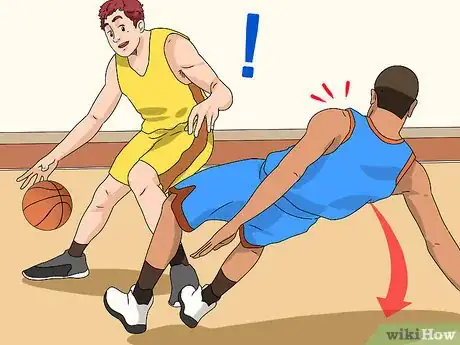
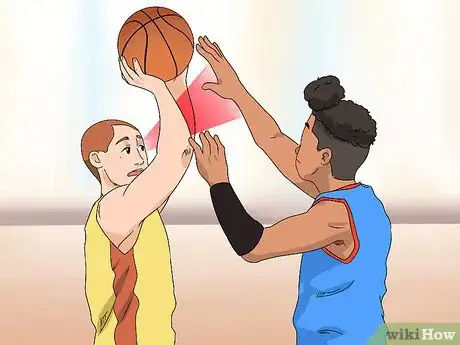
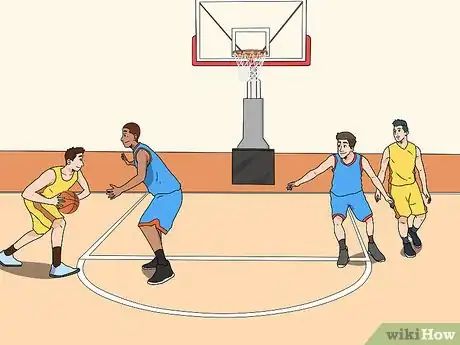
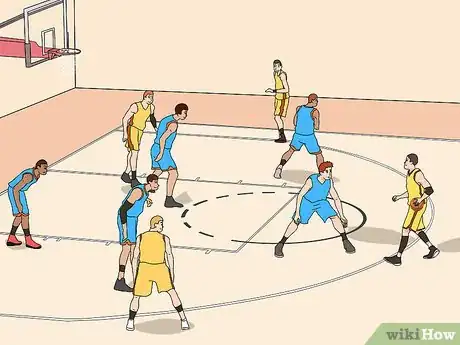
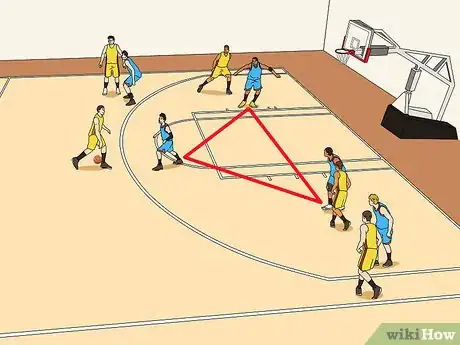
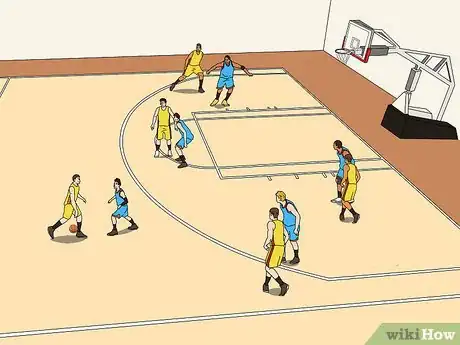
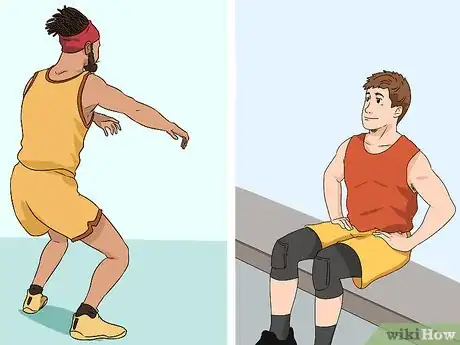
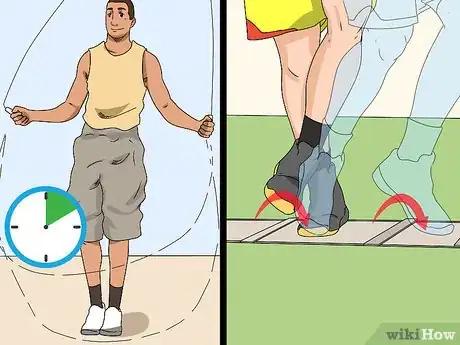
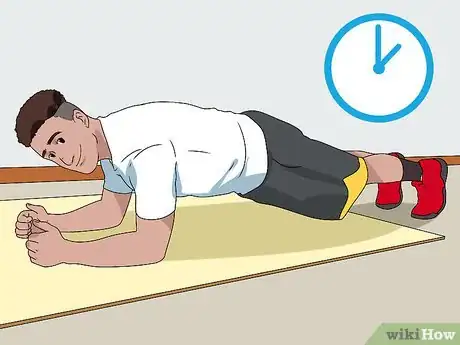
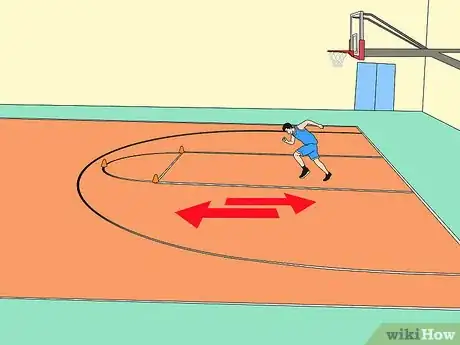
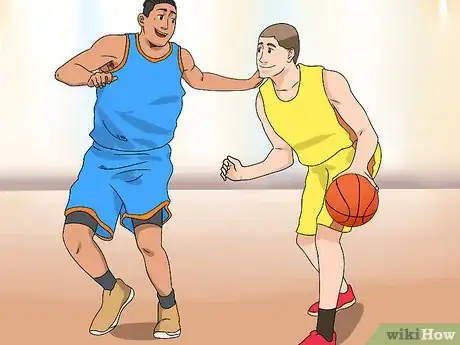

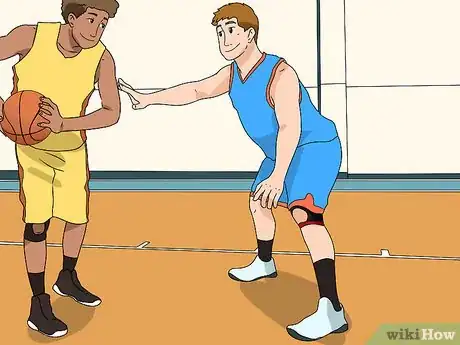
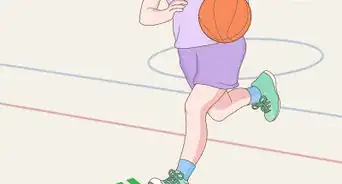
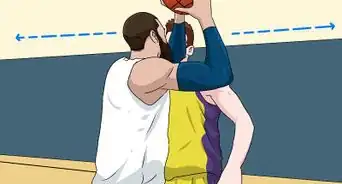

-Step-12.webp)
